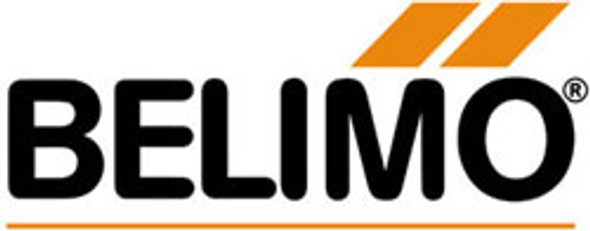Actuators
- Product
- Qty in Cart
- Quantity
- Price
- Subtotal
-

Belimo Actuator Part #TR24-SR-T
Beckett
MSRP: $208.38Now: $157.86Belimo® Actuator 24V,COVERED TERMINAL,ProportMSRP: $208.38Now: $157.86 -

Belimo TF120-S (Repleced by GQD226.1U) Actuator 120V 18# S/R On/Off DCA
Belimo
Belimo TF120-S (Repleced by GQD226.1U) Actuator 120V 18# S/R On/Off DCA GQD226.1U is the direct replacement for TF120-S (forDamper application) Click here for the Direct Replacement FurnacePartSource...Qty in Cart: 0Price:Subtotal: -

Belimo TF24-3 (Replaced by TFB24-3) Actuator 24V, Floating, S/R, DCA, 18in/lb
Beckett
Belimo TF24-3 (Replaced by TFB24-3) Actuator 24V Floating S/R DCA 18in/lb TFB24-3 is the Direct Replacement for TF24-3 Click here for the Direct Replacement FurnacePartSource.com...Qty in Cart: 0Price:Subtotal: -

Belimo TF24 Actuator 24v, 18#, S/R, On/Off DCA (Multiple Replacement Options)
Belimo
MSRP: $119.21Now: $92.07Belimo TF24 Actuator (Multiple Replacement Options) 24v 18# S/R On/Off DCA Part no longer made. Multiple Replacement Options: Call or text us at 1.866.620.8417 for help determining appropriate replacement part...MSRP: $119.21Now: $92.07Qty in Cart: 0Price:MSRP: $119.21Now: $92.07Subtotal: -

Belimo TF120 Actuator 120v, 18#, S/R, On/Off DCA (Multiple Replacement Options)
Beckett
Belimo TF120 Actuator (Multiple Replacement Options) 120v 18# S/R On/Off DCA Part no longer made. Multiple Replacement Options: Call or text us at 1.866.620.8417 for help determining appropriate replacement part. FurnacePartSource.com...Qty in Cart: 0Price:Subtotal: -

Belimo AF24 (Replaced by AFB24) Actuator 24V, S/R, 133LB, OPEN/CLOSE DCA
Beckett
Belimo AF24 (Replaced by AFB24) Actuator 24V S/R 133LB OPEN/CLOSE DCA AFB24 is the direct replacement for AF24 Click here for the Direct Replacement FurnacePartSource.com Commitment Always Brand-New...Qty in Cart: 0Price:Subtotal: -

Belimo AF120 Actuator 120V, S/R, 133LB, OPEN/CLOSE DCA (Multiple Replacement Options)
Beckett
Belimo AF120 Actuator (Multiple Replacement Options) 120V S/R 133LB OPEN/CLOSE DCA Part no longer made. Multiple Replacement Options: Call or text us at 1.866.620.8417 for help determining appropriate replacement part...Qty in Cart: 0Price:Subtotal: -

Belimo Actuator Part #NMB24-3
Beckett
MSRP: $213.81Now: $161.98Belimo® Actuator 24V NSR 90inlb ON/OFF/FLOATMSRP: $213.81Now: $161.98 -

Belimo NF24-SR-S (Replaced by NFB24-SR-S) Actuator 24V, 60LB, S/R, PROP(0-10VDC)
Belimo
Belimo NF24-SR-S Actuator (Replaced by NFB24-SR-S) 24V 60LB S/R PROP(0-10VDC) NFB24-SR-S is the direct replacement for NF24-SR-S Click here for the Direct Replacement FurnacePartSource.com...Qty in Cart: 0Price:Subtotal: -

Belimo NF24-S2 (Replaced by NFB24-S) Actuator
Beckett
Belimo NF24-S2 (Replaced by NFB24-S) Actuator 24vac 2-POS S/R 60# 2 aux Switches NFB24-S is the direct replacement for NF24-S2 Click here for the Direct Replacement FurnacePartSource...Qty in Cart: 0Price:Subtotal: -

Belimo NF24-SR Actuator (Multiple Replacement Options)
Beckett
Belimo NF24-SR Actuator (Multiple Replacement Options) 24V 60LB S/R PROP(0-10VDC) DCA Part no longer made. Multiple Replacement Options: Call or text us at 1.866.620.8417 for help determining appropriate replacement part...Qty in Cart: 0Price:Subtotal: -

Belimo NF24-S (Replaced by NFB24-S) Actuator 24V, S/R, 60LB, OPEN/CLOSE, Auxiliary Switch
Beckett
Belimo NF24-S (Replaced by NFB24-S) Actuator 24V S/R 60LB OPEN/CLOSE Auxiliary Switch NFB24-S is the Direct Replacement for NF24-S (FOR DAMPER APPLICATIONS ONLY, IF USED ON A VALVE BODY WE WILL NEED THE VALVE BODY PART NUMBER TO VERIFY...Qty in Cart: 0Price:Subtotal: -

Belimo Actuator Part #NF24-MFT-P-30001
Beckett
MSRP: $423.02Now: $314.99Belimo® Actuator 24V SR 60#IN PreSetFloatingPtMSRP: $423.02Now: $314.99 -

Belimo NF24 Actuator (Multiple Replacement Options)
Belimo
Belimo NF24 Actuator (Multiple Replacement Options) 24V S/R 60LB OPEN/CLOSE DCA Part no longer made. Multiple Replacement Options: Call or text us at 1.866.620.8417 for help determining appropriate replacement...Qty in Cart: 0Price:Subtotal: -

Belimo NF120-S (Replaced by NFBUP-S) Actuator 120V, S/R, 60LB
Beckett
Belimo NF120-S (Replaced by NFBUP-S) Actuator 120V S/R 60LB OPEN/CLS Auxiliary Switch NFBUP-S is the Direct Replacement for NF120-S Click here for the Direct Replacement FurnacePartSource.com...Qty in Cart: 0Price:Subtotal: -

Belimo NF120 (Replaced by NFBUP) Actuator 120V
Beckett
Belimo NF120 (Replaced by NFBUP) Actuator 120V S/R 60LB OPEN/CLOSE DCA NFBUP is the direct replacement for NF120 Click here for the Direct Replacement FurnacePartSource.com Commitment Always Brand-New...Qty in Cart: 0Price:Subtotal: -

Belimo Actuator Part #LF24-MFT-S-20
Beckett
MSRP: $547.45Now: $414.74Belimo® Actuator 24v S/R 6-9vdc 35inlb,W/AuxSwMSRP: $547.45Now: $414.74 -

Belimo Actuator Part #LF24-SR-S
Beckett
MSRP: $445.67Now: $337.63Belimo® Actuator 24v;35#;S/R;2-10vdcProp;AuxSwtMSRP: $445.67Now: $337.63 -

Belimo Actuator Part #LF24-SR-E
Beckett
MSRP: $452.30Now: $342.65Belimo® Actuator 24V 2-10VDC 35#inlb SRMSRP: $452.30Now: $342.65 -

Belimo Actuator Part #LF24-SR
Beckett
MSRP: $418.57Now: $317.10Belimo® Actuator 24v;35#;S/R;2-10vdcPropMSRP: $418.57Now: $317.10
